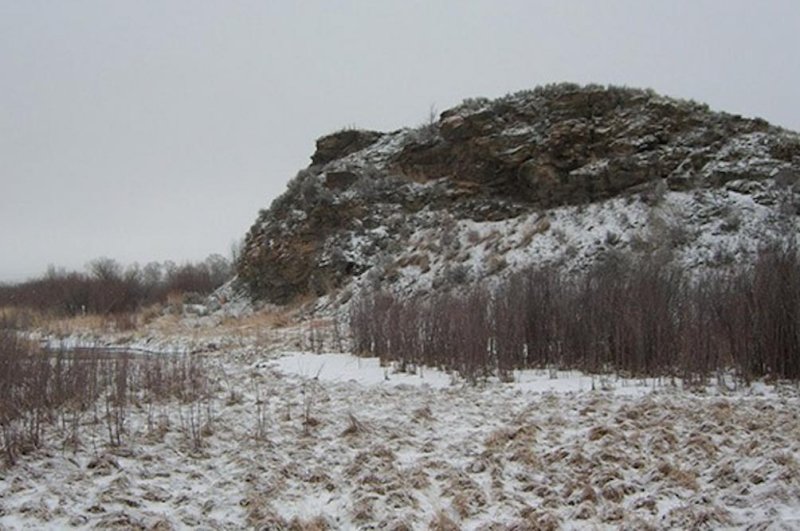Montana's Anzick site is the only known Clovis burial site. Photo by Texas A&M
June 19 (UPI) -- New tests confirm the Anzick-1 remains and the artifacts recovered from Montana's Clovis burial site are the same age.
The remains of a human infant were first discovered at the Anzick site by construction workers in 1968. Some archaeologists argued the infant represented the only known burial of a member of the Clovis people, thought to be the first widespread group to inhabit North America. The Clovis people established settlements across North America some 13,000 years ago.
Researchers found Clovis artifacts, including stone projectiles and antlers, near the infant remains at the Anzick site, but subsequent dating attempts revealed discrepancies between the age of the remains and the Clovis artifacts. Some tests suggested the infant was several thousand years younger than the artifacts.
Scientists with the University of Oxford and Texas A&M University recently returned to question dating at the Anzick site, applying a new radiocarbon dating technique to accurately determine the age of the human remains.
"The human remains yielded a younger age that was not in agreement with the ages from the antler artifacts, which dated older than the human remains," Michael Waters, director of Texas A&M's Center for the Study of the First Americans, said in a news release. "If the human remains and Clovis artifacts were contemporaneous, they should be the same age."
Using a technique called Specific Amino Acid Radiocarbon Dating, scientists were able to treat collagen extracted from the human remains and successfully isolate an amino acid called hydroxyproline for testing.
"This amino acid could only have come from the human skeleton and could not be contaminated," Waters said.
The new tests confirmed the infant remains, antlers and other Clovis artifacts were contemporaneous. Researchers published the results of the dating efforts in the journal PNAS.
"The human remains and Clovis artifacts can now be confidently shown to be the same age and date between 12,725 to 12,900 years ago," Waters said. "This is right in the middle to the end of the Clovis time period which ranges from 13,000 to 12,700 years ago."
The tests confirm the Anzick site as the only known Clovis burial site.















